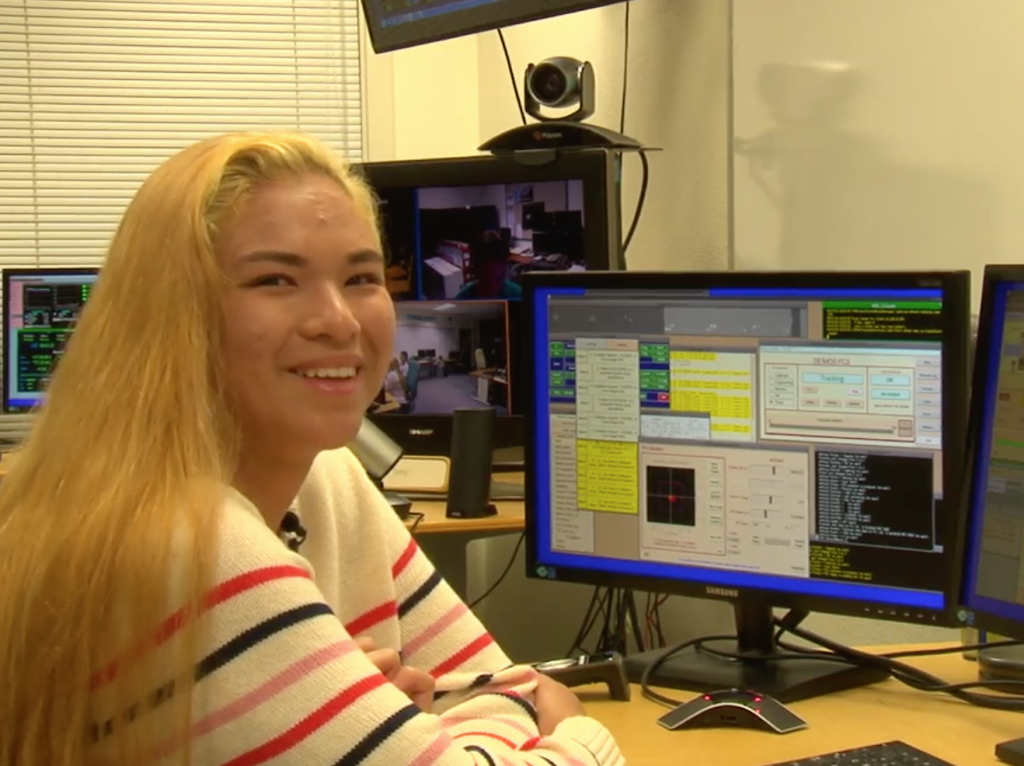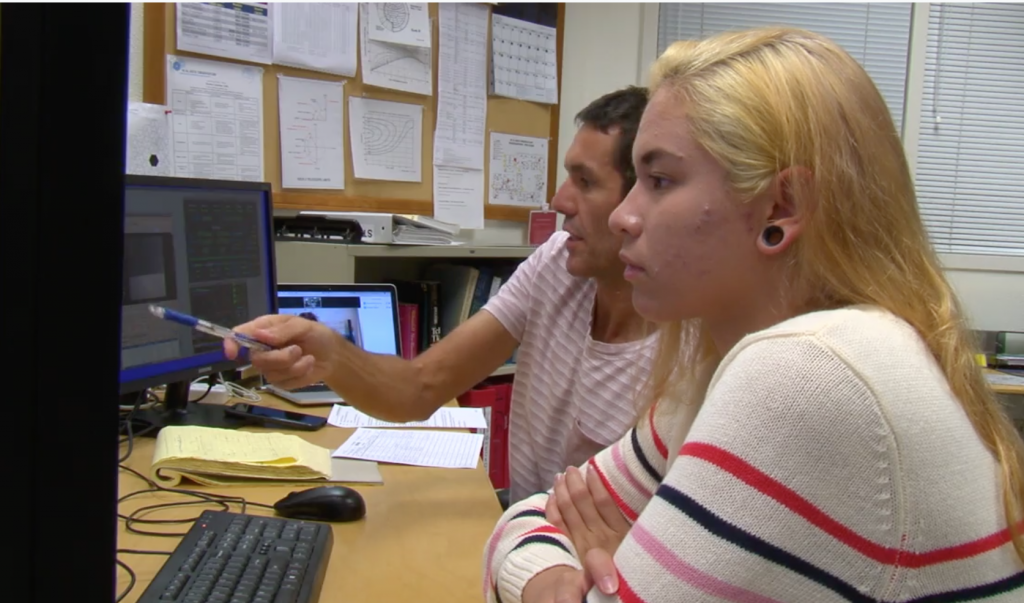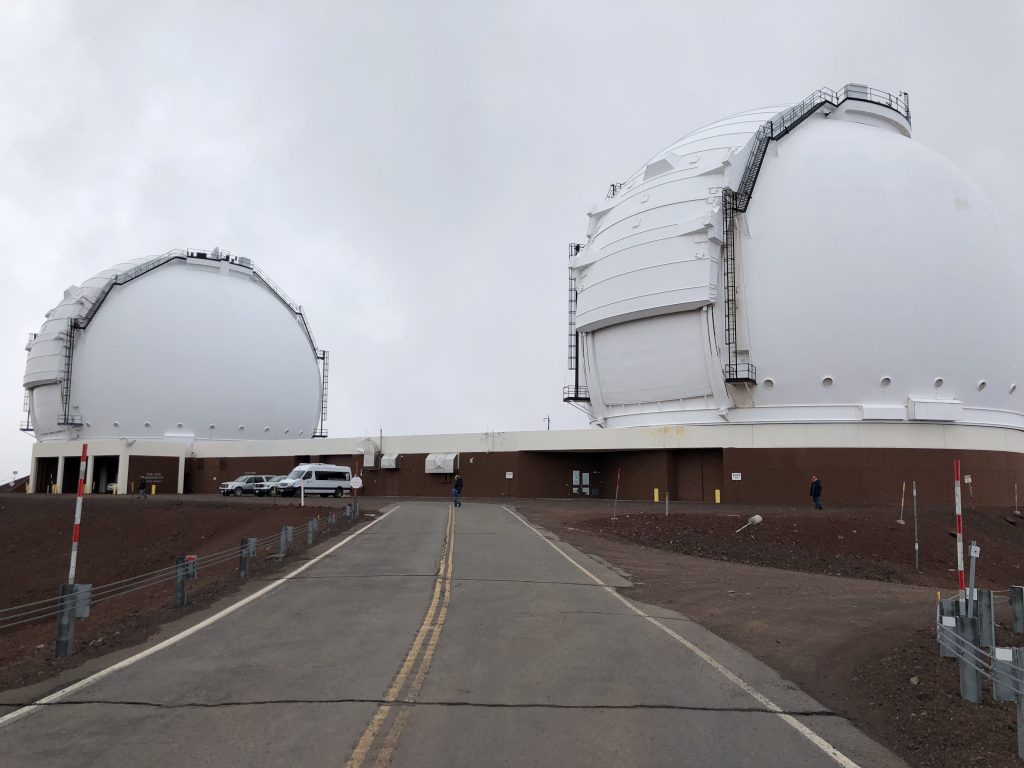Honoka‘a Grad Scores Observatory Time at Keck
It’s practically unheard of—conducting professional, astronomical observations at a world-class telescope before entering college.
But that’s precisely what Honoka‘a High School graduate Keilani Steele has achieved after recently scoring highly-competitive observing time at W.M. Keck Observatory, one of the largest, most scientifically-impactful observatories in the world.

Keilani Steele, Honoka‘a High School graduate and Maunakea Scholar. Video clip: W.M. Keck Observatory
On July 6, from 12:24 to 2:24 a.m., Steele used Keck Observatory’s DEIMOS (DEep Imaging and Multi-Object Spectrograph) instrument to study dark matter in the nearby Draco dwarf galaxy.
Keck Observatory Support Astronomer Carlos Alvarez guided Steele through her observing run, while Canada-France-Hawai‘i-Telescope (CFHT) Outreach Coordinator Mary Beth Laychak, who spearheads the Maunakea Scholars program, watched remotely from Europe, intent on not missing Steele in action despite being on business travel.

Honoka‘a High School graduate and Maunakea Scholar Keilani Steele and Carlos Alvarez, W.M. Keck Observatory support astronomer. Video clip: W.M. Keck Observatory
Steele was awarded the Keck Observatory observing run in April during her senior year at Honoka‘a High School. She is the very first to win two observing runs in Maunakea Scholars program history, and the first high school graduate to observe at Keck Observatory since the facility’s twin telescopes began science operations 25 years ago.

Honoka‘a High School graduate and Maunakea Scholar Keilani Steele is studying dark matter in the nearby Draco dwarf galaxy. Video clip: W.M. Keck Observatory
ABOUT MAUNAKEA SCHOLARS
Maunakea Scholars is an innovative program designed to bring Hawai‘i’s aspiring young astronomers into the observatory community, competitively allocating observing time on world-class telescopes to local students. Initiated by Canada-France-Hawai‘i Telescope (CFHT) and Gemini International Observatory, the Maunakea Scholars program is a partnership between the Maunakea Observatories (MKO) and the Hawai‘i State Department of Education (DOE). Visit www.maunakeascholars.com for details.
ABOUT W.M. KECK OBSERVATORY
The W.M. Keck Observatory telescopes are among the most scientifically productive on Earth. The two, 10-meter optical/infrared telescopes on the summit of Maunakea on the Island of Hawaii feature a suite of advanced instruments including imagers, multi-object spectrographs, high-resolution spectrographs, integral-field spectrometers, and world-leading laser guide star adaptive optics systems. Keck Observatory is a private 501(c) 3 non-profit organization operated as a scientific partnership among the California Institute of Technology, the University of California, and the National Aeronautics and Space Administration. The Observatory was made possible by the generous financial support of the W. M. Keck Foundation. For more information, visit www.keckobservatory.org.














